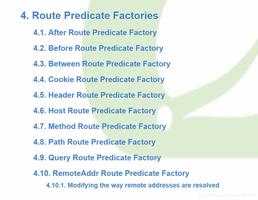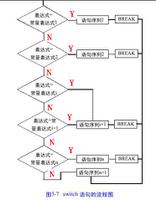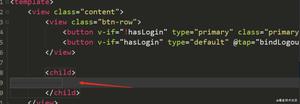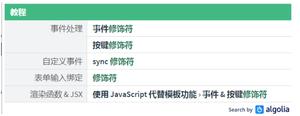Java 8 默认方法(Default Methods)

Java 8 默认方法(Default Methods) Posted by Ebn Zhang on December 20, 2015
Java 8 引入了新的语言特性——默认方法(Default Methods)。
Default methods enable new functionality to be added to the interfaces of libraries and ensure binary compatibility with code written for older versions of those interfaces.
默认方法允许您添加新的功能到现有库的接口中,并能确保与采用旧版本接口编写的代码的二进制兼容性。
默认方法是在接口中的方法签名前加上了 default 关键字的实现方法。
一个简单的例子
1 | interface InterfaceA { |
ClassA 类并没有实现 InterfaceA 接口中的 foo 方法,InterfaceA 接口中提供了 foo 方法的默认实现,因此可以直接调用 ClassA 类的 foo 方法。
为什么要有默认方法
在 java 8 之前,接口与其实现类之间的 耦合度 太高了(tightly coupled),当需要为一个接口添加方法时,所有的实现类都必须随之修改。默认方法解决了这个问题,它可以为接口添加新的方法,而不会破坏已有的接口的实现。这在 lambda 表达式作为 java 8 语言的重要特性而出现之际,为升级旧接口且保持向后兼容(backward compatibility)提供了途径。
1 | String[] array = new String[] { |
这个 forEach 方法是 jdk 1.8 新增的接口默认方法,正是因为有了默认方法的引入,才不会因为 Iterable 接口中添加了 forEach 方法就需要修改所有 Iterable 接口的实现类。
下面的代码展示了 jdk 1.8 的 Iterable 接口中的 forEach 默认方法:
1 | package java.lang; |
默认方法的继承
和其它方法一样,接口默认方法也可以被继承。
1 | interface InterfaceA { |
接口默认方法的继承分三种情况(分别对应上面的 InterfaceB 接口、InterfaceC 接口和 InterfaceD 接口):
不覆写默认方法,直接从父接口中获取方法的默认实现。
覆写默认方法,这跟类与类之间的覆写规则相类似。
覆写默认方法并将它重新声明为抽象方法,这样新接口的子类必须再次覆写并实现这个抽象方法。
默认方法的多继承
Java 使用的是单继承、多实现的机制,为的是避免多继承带来的调用歧义的问题。当接口的子类同时拥有具有相同签名的方法时,就需要考虑一种解决冲突的方案。
1 | interface InterfaceA { |
在 ClassA 类中,它实现的 InterfaceA 接口和 InterfaceB 接口中的方法不存在歧义,可以直接多实现。
在 ClassB 类中,它实现的 InterfaceB 接口和 InterfaceC 接口中都存在相同签名的 foo 方法,需要手动解决冲突。覆写存在歧义的方法,并可以使用 InterfaceName.super.methodName(); 的方式手动调用需要的接口默认方法。
接口继承行为发生冲突时的解决规则
值得注意的是这么一种情况:
1 | interface InterfaceA { |
当 ClassA 类多实现 InterfaceA 接口和 InterfaceB 接口时,不会出现方法名歧义的错误。当 ClassB 类覆写 foo 方法时,无法通过 InterfaceA.super.foo(); 调用 InterfaceA 接口的 foo 方法。
因为 InterfaceB 接口继承了 InterfaceA 接口,那么 InterfaceB 接口一定包含了所有 InterfaceA 接口中的字段方法,因此一个同时实现了 InterfaceA 接口和 InterfaceB 接口的类与一个只实现了 InterfaceB 接口的类完全等价。
这很好理解,就相当于 class SimpleDateFormat extends DateFormat 与 class SimpleDateFormat extends DateFormat, Object 等价(如果允许多继承)。
或者换种方式理解:
1 | class ClassC { |
这里的 classC.foo(); 同样调用的是 ClassD 类中的 foo 方法,打印结果为“ClassD foo”,因为 ClassC 类中的 foo 方法在 ClassD 类中被覆写了。
在上面的 ClassA 类中不会出现方法名歧义的原因是所谓“存在歧义”的方法其实都来自于 InterfaceA 接口,InterfaceB 接口中的“同名方法”只是继承自 InterfaceA 接口而来并对其进行了覆写。ClassA 类实现的两个接口不是两个毫不相干的接口,因此不存在同名歧义方法。
而覆写意味着对父类方法的屏蔽,这也是 Override 的设计意图之一。因此在实现了 InterfaceB 接口的类中无法访问已被覆写的 InterfaceA 接口中的 foo 方法。
这是当接口继承行为发生冲突时的规则之一,即 被其它类型所覆盖的方法会被忽略。
如果想要调用 InterfaceA 接口中的 foo 方法,只能通过自定义一个新的接口同样继承 InterfaceA 接口并显示地覆写 foo方法,在方法中使用 InterfaceA.super.foo(); 调用 InterfaceA 接口的 foo 方法,最后让实现类同时实现 InterfaceB接口和自定义的新接口,代码如下:
1 | interface InterfaceA { |
注意! 虽然 InterfaceC 接口的 foo 方法只是调用了一下父接口的默认实现方法,但是这个覆写 不能省略,否则 InterfaceC 接口中继承自 InterfaceA 接口的隐式的 foo 方法同样会被认为是被 InterfaceB 接口覆写了而被屏蔽,会导致调用 InterfaceC.super.foo() 时出错。
通过这个例子,应该注意到在使用一个默认方法前,一定要考虑它是否真的需要。因为 默认方法会带给程序歧义,并且在复杂的继承体系中容易产生编译错误。滥用默认方法可能给代码带来意想不到、莫名其妙的错误。
接口与抽象类
当接口继承行为发生冲突时的另一个规则是,类的方法声明优先于接口默认方法,无论该方法是具体的还是抽象的。
1 | interface InterfaceA { |
ClassA 类中并不需要手动覆写 bar 方法,因为优先考虑到 ClassA 类继承了的 AbstractClassA 抽象类中存在对 bar 方法的实现,同样的因为 AbstractClassA 抽象类中的 foo 方法是抽象的,所以在 ClassA 类中必须实现 foo 方法。
虽然 Java 8 的接口的默认方法就像抽象类,能提供方法的实现,但是他们俩仍然是 不可相互代替的:
接口可以被类多实现(被其他接口多继承),抽象类只能被单继承。
接口中没有
this指针,没有构造函数,不能拥有实例字段(实例变量)或实例方法,无法保存 状态(state),抽象方法中可以。抽象类不能在 java 8 的 lambda 表达式中使用。
从设计理念上,接口反映的是 “like-a” 关系,抽象类反映的是 “is-a” 关系。
接口静态方法
除了默认方法,Java 8 还在允许在接口中定义静态方法。
1 | interface InterfaceA { |
其他注意点
default关键字只能在接口中使用(以及用在switch语句的default分支),不能用在抽象类中。接口默认方法不能覆写
Object类的equals、hashCode和toString方法。接口中的静态方法必须是
public的,public修饰符可以省略,static修饰符不能省略。即使使用了 java 8 的环境,一些 IDE 仍然可能在一些代码的实时编译提示时出现异常的提示(例如无法发现 java 8 的语法错误),因此不要过度依赖 IDE。
以上是 Java 8 默认方法(Default Methods) 的全部内容, 来源链接: utcz.com/z/391258.html








